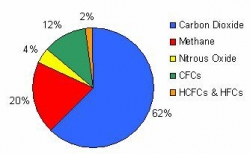
1 week ago •
Related content

What Is the Consumer Price Index – CPI? The Consumer Price Index (CPI) is a measure that examines the weighted average of prices of a basket of co...
1 week ago

What is the main component of greenhouse gases? Greenhouse gases include water vapor, carbon dioxide, methane, nitrous oxide, and ozone. The major g...
1 week ago

What does the World Economic Forum do? The Forum engages the foremost political, business, cultural and other leaders of society to shape global, reg...
1 week ago

Amazing Facts About the Snake 1.There are over 3000 kinds of snakes in the world. They are present in every continent except Antarctica 2. Snakes ca...
1 week ago

What is Chimera? A chimera is essentially a single organism that's made up of cells from two or more "individuals"—that is, it contains two sets o...
1 week ago
